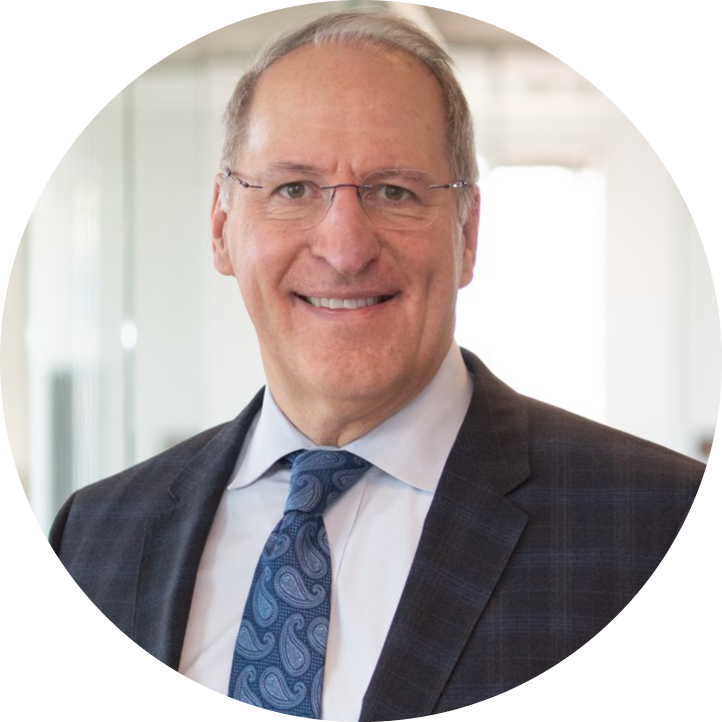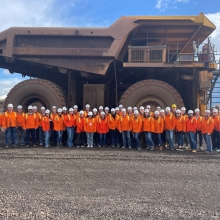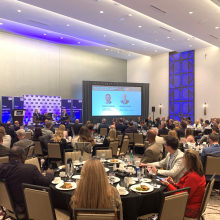The business reality of paid family and medical leave

By Doug Loon
President and CEO
Minnesota Chamber of Commerce
Here we are, friends – 10 days out from the required adjournment of the 2025 legislative session, and quite a number of big-ticket items are still on the table for consideration as they wrap up this budget year. Of course, there's always speculation, which is a hot topic at the Capitol right now: whether or not they can finish on time. They do need to produce a budget, and if they don't by the required adjournment date of May 19, it means they'll have to come back in a special session, which only the governor can call, but only the Legislature can adjourn. They'll need to negotiate a deal on what a special session will look like. But we're not there yet. What we want to do is keep pressing forward with the time we have left – just a short 10 days – and they will work through the weekend to complete whatever they can. Leadership has been meeting, the two bodies have been meeting, and progress, I believe, is being made. But there are a few things, as I mentioned, that we want to get done.
I will also mention permitting reform, because we now have an emerging bipartisan strategy coming together at the Capitol. We have bipartisan supporters from both sides of the aisle, and we have support in both chambers as well. We're anxious for a freestanding bill to be considered and make its way through the Senate and on to the House. So, I want to thank those members who are supporting the work of the business community, along with our friends in labor and in the ag community, who have come together across the state to pursue meaningful permitting reform. In my opinion, and the opinion of many, it's not very controversial, but it is a meaningful step forward in improving our permitting process, which will improve our economic outlook going forward for our state. So, it's important we get that done.
Lastly, much like last week and the week before on the podcast, we've been digging deeper into the Paid Family and Medical Leave proposal with a plan to make some meaningful adjustments to it. Two weeks ago, we had Lauryn Schothorst, who's the Chamber's expert on labor and workforce policy. Last week, we had Ross Widmoyer of Faribault Mill on, talking about how Paid Family and Medical Leave will impact his business. And this week, Brooke Lee, CEO of Anchor Paper Company, joined me to discuss how this new mandate, among others, will impact operations at her business. See the transcript from our discussion below:
Doug Loon: Today, I'm thrilled to have Brooke Lee with me. Brooke is the CEO of Anchor Paper. Anchor is located in St. Paul, with locations in the metro and in Wisconsin. So, Brooke has the privilege of seeing two states and the activities not just across those two, but also throughout Minnesota. She sees the challenges with some of these laws, specifically as they impact her business and her employees. Brooke, thank you for joining us today as we talk about these workplace mandates.
Brooke Lee: Hi, Doug. Thank you and the Minnesota Chamber for having me here today.
DL: Tell us a little bit about your family-owned business and how long you've been in the lead role, and a little bit about the products that you make.
BL: Anchor Paper is a paper and packaging distributor and converter. That last bit means we do a little bit of manufacturing. We're a 100-year-old business – we celebrated that milestone last year. I'm proud to represent my family's fourth generation of leadership and ownership. One unique attribute of Anchor Paper is that we're also a hybrid ESOP company. That means our employees, quite literally, are owners – they own 49% of our company. We've been headquartered in downtown Saint Paul for about 80 years. We've been in this area a long time, proud to serve this community. In the last 10 years or so, we've expanded into Wisconsin. We manufacture primarily out of our River Falls, Wisconsin location.
DL: Thank you for being with us, Brooke, and thank you for the rich legacy your family and business have put forth in Minnesota. As I said earlier, you see the implications of some of these large mandates on employers. Let's talk a bit about the Paid Family and Medical Leave law. It will also impact your workforce. How many employees do you have at Anchor Paper?
BL: We have about 120 across our six facilities.
DL: Fantastic. As noted on previous podcasts, the Paid Family and Medical Leave law goes into effect January 1, 2026 – just eight months or less from now. It's a state insurance product that requires all employers and employees to participate. It's a leave or insurance program administered by the Department of Employment and Economic Development. It will replace many long-term leave benefits that employers currently offer with, I would anticipate, a larger benefit package – but at a significant cost. So as we think about the new law, Brooke, how are you preparing for that, and how do you see it impacting your benefits strategy and your ability to get the job done with potentially fewer workers?
BL: There's a lot there. It's been hard to strategize around this legislation because, candidly, the details haven't all been filled in. We're planning for what we know, but it's hard to roll that out to our employee-owners because there are a lot of questions. It doesn’t bode well for us or the program if we can’t answer them. For most of our employees, this will be for a significant life event. They're used to working with our team at Anchor – our HR professionals they see as facilitators and resources. Now we have to direct them to a website and people they don’t know. There’s a lot of trepidation around that. You can understand, there’s been a lot of change and uncertainty for people, and this adds another layer of stress around something that’s already a significant event.
DL: Right. You pointed out that under this program run by the state, your employees won’t be going to you for a discussion about leave – they’ll go to DEED. Sometimes they can predict a life event, sometimes not. There's also a payroll tax involved, which employees will likely pay half of. Are your employees aware of this pending tax?
BL: That's a great question. We’ve chosen not to address that yet because we’re hopeful those details might be amended by the end of the session. I’m not looking to cause undue stress to our employees, who are already working hard and navigating unknowns. We know we’ll participate in at least half of it, but some of it will have to go to the employees. It’s a substantial cost.
DL: You’re familiar with the Earned Sick and Safe Leave law currently in place, partially because St. Paul already imposed it at the municipal level. What have you learned from that rollout that we should be thinking about as we prepare for Paid Family and Medical Leave?
BL: Change is hard, and even harder when it's out of your hands. With that change, and now this one, if there’s a glitch in the state system, my HR team can’t fix it. When it’s our own system, we know the broker, the resources and our team gets it done. There's just more uncertainty, potential delays and communication issues. That’s 98% of the battle. Especially with health or time off, people want clarity and a trusted resource.
DL: Take a minute and share your current benefits package. I assume you’ve tailored it to your team’s needs. How might this law change it?
BL: We’re very flexible with our employees. We’re a long-standing company, and many of our employees are highly tenured. We trust them, and we can adapt quickly. They appreciate that. As for health care and other benefits, we offer multiple choices tailored to different lifestyles and family situations.
DL: That’s what we’re hearing statewide – that one-size-fits-all is rigid and takes away flexibility. There’s a proposal at the Capitol to make meaningful adjustments: scaling back the 12/12-week benefit (capped at 20 weeks), reducing the payroll tax and exempting smaller businesses. What would your message be to legislators considering this bipartisan plan?
BL: You touched on FMLA. At Anchor, that’s essentially how we operate. We're familiar with it, and so are our peers. We can work around 12 weeks, even though it's a challenge to find short-term help. But 20 weeks is tough for a company our size. Regarding the cost, it’s real. Companies like Anchor reinvest in ourselves. That’s why we’ve been here 100 years. If I’m saving money, I’m putting it toward innovation, growth or training. I think employees feel the same way – saving on the payroll tax allows them to do more for themselves and their families.
DL: Well said. One final message – what would you say to other business leaders about getting involved?
BL: If they haven’t reached out to their legislator yet, I encourage them to do so. We all have unique challenges and needs, and it’s important for legislators to understand that. They're advocating for us. I’d also encourage business leaders to get informed and involved. I’ve been surprised by how many didn’t know this was coming. Now more than ever, it’s critical to be educated and let your voice be heard.
DL: Fantastic. Thank you, Brooke Lee, for being with us. You're a great business leader, and we appreciate you being in business here in Minnesota and your support for the Chamber and the broader business community. I echo what Brooke said – business leaders, reach out to your legislators. Even if you know where they stand, they need to hear from you. The time is now for the business community to push for progress to help ensure Minnesota’s economic future. Thanks for tuning in this week. We’ll catch up with you on next week’s episode of the Minnesota Business Podcast.


